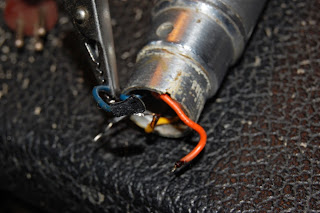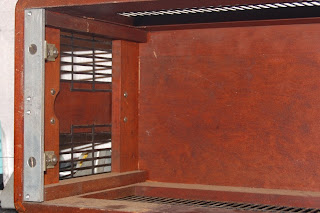The original design is actually pretty cool. You have a case ground (black) a high impedance (blue) and a transformer coupled low impedance pair (orange/yellow), so you could cable select impedance. Reminds me of the old SM-57 transformer bypass mod, just so happens to be BUILT IN and optional on these.
That said, sourcing the 4 pin connectors for it now is something of a nuisance, and I want to reach for the low-Z mode anyway, so what you're about to see is an easily reversible disconnect of the high impedance (pre transformer) circuit.
Form factor is identical, I happened to have a couple three pin Cannon male inserts lying around, which turned this into a full "bolt on" mod.
The dirt and crud even lend a period correct feel to these, so as not to bum out the vintage zombies. I jest, partially.
So a bit of heat shrink on the blue hi-Z feed, connect chassis to 1, and I decided to jam orange as "hot" on pin 2 because it's a "warmer" color than yellow. Completely scientific like. Whatever. The mic works, I like the sound, it will get used.
Apologies, I don't seem to have taken a picture of the completed unit. It looks like the connector end of a standard microphone, my guess is that if that isn't explanation enough, this mod might not be for you.













